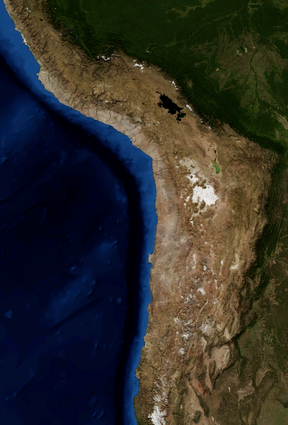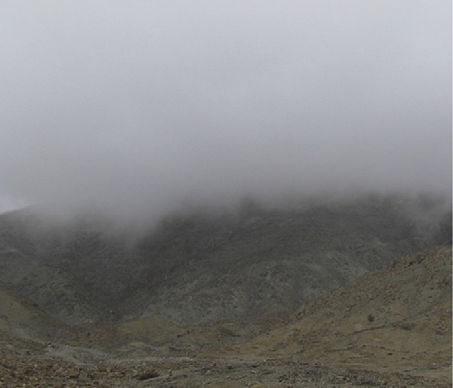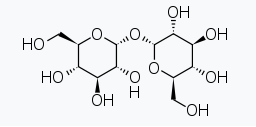Being old enough to remember when David Bowie brought out “Life on Mars” and watching him on Top Of The Pops, it’s great to see the renewed fascination with this planet. We get headlines about the findings from the various missions circling around and landing on the Mars surface. Behind those headlines there’s a fantastic amount of science going on that we don’t hear about unless you’re really into space exploration. Astrobiology is the area of science I’m drawing from to write this blog post. Especially about the limits for microbes to grow and how they get their water…….
A fact that has been known for many years is that microbes do not grow when the relative humidity of the air gets below 60%. In the FOOD section of my eBook A Wetter Look At Climate Change there is a table that shows the lowest %RH for one of the organisms is 61%. The two organisms at the bottom of the table are Xerophilic, which means, high tolerance and able to survive in dry conditions. This is where “Life on Mars” is relevant.

In South America there is an area that is the most “arid” place on Earth. An area defined as arid has little or no rain and is too dry or barren to support vegetation. The Atacama Desert, located in northern Chile, is accepted as being the driest and oldest part of our planet. Microbiologists have studied the bacteria and fungi from this region since the 1960’s. But in 2003, NASA published a paper describing Atacama as a model for Mars. That kicked off intense interest in engineering and scientific activity to mimic how to perform tests on the Martian terrain.
The big question “Is there life on Mars?”
Let’s start with “Is there water on Mars?” Pictures from the Mars missions compared to geographical features on Earth, indicate strongly that liquid water once flowed on the surface of Mars. Features that look just like riverbeds and erosion by water. We know for sure that water in the form of ice sits at the North and South poles of Mars. Also, there may be water deep underground. Future missions are planned to provide some answers.

Does water always mean life?
As far as we know, water is a prerequisite for life. On Earth no life exists that does not rely on water. Back to the arid Atacama Desert. Engineers and scientist have designed machines and testing techniques to detect the presence of microbes in this desolate part of our world. The technology will be placed on board Mars missions and the data from the tests will be beamed back to Earth.
All very exciting and high tech this stuff. In my reading of the published papers on the microbiology and molecular biology of the Atacama organisms, I went looking for evidence of microbial growth in an environment that is predominantly below 60%RH. I thought, if anybody can find such Xerophiles, these guys might.
I was encouraged when I found this statement in a review paper: “This work definitively validated the Atacama Desert as a Mars analogue and also as an unparalleled place to pursue studies on the dry limit for life.” In my mind, coloured by my quest for an explanation for the 60%RH microbial growth limit, I read this as a search for organisms that can scavenge in low moisture conditions. By low moisture conditions, I mean at a humidity below 60 %RH.
A problem with doing science outside of the laboratory is the things going on that are not under your control. Looking at the weather conditions for Atacama with less than 2mm annual rain and average %RH of 10, it is easy to classify this desert as the driest place on Earth. So, what can get in the way of looking for life in such a low moisture environment? Fog for one. Drifting in from the coast and around the coastal range of mountains into the desert this moisture can provide organisms with the necessary moisture to keep them alive. What the scientists observed is a fall off in the total number and different types of organisms as they went from the edges of the desert towards its middle.

From: Life at the dry edge: Microorganisms of the Atacama Desert Armando Azua-Bustos, Catalina Urrejola, Rafael Vicuña
After my initial excitement of maybe getting an answer to the 60 %RH growth limit for microbes, I was becoming disillusioned. Seemed like the microbes were simply scavenging moisture when it was carried across parts of the desert by fog. Frustrated by not making progress on the 60 %RH growth limit question I contacted one of the authors of a review paper “Life at the dry edge: Microorganisms of the Atacama Desert”. His name is Armando Azua-Bustos, an Astrobiologist working in Spain. We had a Skype call in which, at last, I saw hope on the horizon.
Armando told me about controlled laboratory experiments where he studied the Xerophiles from the Atacama Desert. Under low %RH conditions mimicking the Atacama Desert he detected one of the key signs of a living organism. All living creatures must have an active metabolism to live and certain molecules are produced and used within living cells. Using sensitive probes for the molecules of life, activity was seen in the Xerophiles at 10% and 30% humidity. Well below the 60% limit.
My chat with Armando got even better. He told me about how cells can protect themselves against dehydration. Certain types of sugar molecules and proteins are produced by the Xerophiles. One of the key sugars is called Trehalose that can substitute for water molecules within the cell by interacting with other key molecules. I knew about Trehalose from my past where I used it to protect yeast from freezing when storing at -20°C. Another type of molecule mentioned by Armando is Dehydrins. These are small proteins that can also substitute for water molecules within the cell. Both Trehalose and Dehydrins are produced in cells that are under stress from dehydration. Armando described the inside of the cell becoming more like a gel rather than a watery soup.

The picture we now have of Xerophiles is that, when the environment gets drier, the protective molecules, Trehalose and Dehydrins, allow the cell to continue to metabolise with less water. However, further dehydration would stop metabolism completely, which means cell death. Armando suggested that Xerophiles have evolved biochemical pathways to counteract dehydration by producing within the cell a small amount of water for metabolism. This is what Armando and his colleagues are detecting using their probe for metabolic activity. In other words, the Xerophiles respond to drought by protecting themselves and then turn on a water production mechanism.
So, with my question answered about the 60% growth limit, what about the Big question, Life on Mars? Science is telling us that a key sign of life, metabolism, is looking feasible under the dry conditions present on Mars. Does that mean there could be the possibility of organisms growing in that environment? We don’t know yet.
Earth and Mars were created around the same time, about 4.6 billion years ago. Mars started to lose its atmosphere and ability to support liquid water about 4 billion years ago. But it took a further 0.5 billion years (3.5 billion years ago) for life to evolve on Earth. This raises the question of would there have been a sufficient time for life to have evolved on Mars before it became too dry? If life had evolved, is it possible that Martian Xerophiles would be able to sustain low level metabolic activity over the billions of years since it became dry? Armando and his fellow Astrobiologists will one day let us know.
NASA have discovered large underground lakes of water on Mars. One of these is frozen and is the size of Lake Superior, another is liquid. Also, it is possible that underground water could be warmed by the sun and trapped in caves where it could support life. This all adds to the thrill of there being Martians out there, albeit most likely micro-ones!
Welcome to my world of moisture
If you would like to hear more about moisture and humidity in everyday life, please sign up for email alerts of my blogs.
1 Pingback